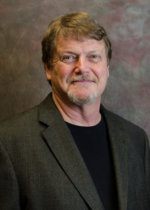Abstract
Building up HPC Infrastructure for Simulation-Based Offshore Floater Design
Offshore floating platforms are complex engineering systems with numerous design challenges for the engineer from the perspective of safety, reliability and longevity. Floating platforms provides safe environments for the production facilities and personnel on topsides, and seamless flow of fluid, power and control between topsides and sub-sea system through risers and umbilical. During their lifetime of operations these platforms are exposed to various environmental loads such as current, wind and waves. One of the most crucial part of the floater design is about the evaluation of the floater’s global performance under design environmental conditions.Global performance refers to motion of the floater in water, and is typically carried out by using semi-empirical potential-flow-based simulation tools that analytically combine the first-order gravitational and inertial forces and empirically handles the higher-order and viscous forces. Scaled model tests are performed to calibrate the empirical part of the global performance analysis tools. The model tests also provides design parameters that cannot be derived from the potential-flow-based analytic tools such as wave run-up, air gap,green water, slamming, springing/ringing and vortex induced motion. These heavy dependency of the design procedure to the physical model test has been one of the main source of uncertainties in the offshore floater design cycle, in terms of schedule and cost [1].
Recently, successful efforts has been made to reduce the dependency on model test by replacing its role by CFD-based numerical wave basin simulation performed in high-performance computers [1, 2]. The newapproach enabled in-situ calibration of the semi-empirical design analysistools by providing accurate global performance of a floater design much quickerthan the model test. As a matter offact, the numerical wave basin provides more realistic and more accurateprediction of the global performance than the physical model test by overcominglimitations of the size and capacity of the model test facilities.
The high-performance computing is also being utilized toextend the application of the conventional global performance analysis tools.The fidelity of the conventional tools are enhanced by the in-situ calibration from the numerical wave basin. The drastically increased analysis speed made itpossible to simulate the whole life time of the platform in a few hours. These new developments in global performance analysis will shift the paradigms of offshore floater design to new places - from low fidelity to high-fidelity analysis, from short term to long-term load assessment and from factor based to reliability-base design evaluation. This presentation describes current status,challenges and future prospects of the simulation-based offshore floater design based on the recent efforts of Technip to build up HPC-based infrastructures for the future.
About the Speaker
Mr. Jim O'Sullivan, Technip USA
Vice President and Chief Technology Officer
 Jim O’Sullivan is Vice President and Chief Technology Officer of Technip USA, and manages the Offshore Technology Services (OTS) Department. OTS provides advanced technical services to offshore projects and manages company research regarding floating systems. Mr.O’Sullivan is responsible for the company’s floating facility products that include developing and launching new technologies, along with supporting established products. He has 40 years of experience in the oil & gas industry, covering technology development, engineering, project management, commercial project development and multiple business related activities. He received a BS in Mechanical Engineering from North Carolina State University, a Masters in Ocean Engineering from MIT, a Professional Ocean Engineers Degree from MIT and Woods Hole Oceanographic Institution, and an MBA from Rice University’s Jones Graduate School of Business.
Jim O’Sullivan is Vice President and Chief Technology Officer of Technip USA, and manages the Offshore Technology Services (OTS) Department. OTS provides advanced technical services to offshore projects and manages company research regarding floating systems. Mr.O’Sullivan is responsible for the company’s floating facility products that include developing and launching new technologies, along with supporting established products. He has 40 years of experience in the oil & gas industry, covering technology development, engineering, project management, commercial project development and multiple business related activities. He received a BS in Mechanical Engineering from North Carolina State University, a Masters in Ocean Engineering from MIT, a Professional Ocean Engineers Degree from MIT and Woods Hole Oceanographic Institution, and an MBA from Rice University’s Jones Graduate School of Business.

 Jim O’Sullivan is Vice President and Chief Technology Officer of Technip USA, and manages the Offshore Technology Services (OTS) Department. OTS provides advanced technical services to offshore projects and manages company research regarding floating systems. Mr.O’Sullivan is responsible for the company’s floating facility products that include developing and launching new technologies, along with supporting established products. He has 40 years of experience in the oil & gas industry, covering technology development, engineering, project management, commercial project development and multiple business related activities. He received a BS in Mechanical Engineering from North Carolina State University, a Masters in Ocean Engineering from MIT, a Professional Ocean Engineers Degree from MIT and Woods Hole Oceanographic Institution, and an MBA from Rice University’s Jones Graduate School of Business.
Jim O’Sullivan is Vice President and Chief Technology Officer of Technip USA, and manages the Offshore Technology Services (OTS) Department. OTS provides advanced technical services to offshore projects and manages company research regarding floating systems. Mr.O’Sullivan is responsible for the company’s floating facility products that include developing and launching new technologies, along with supporting established products. He has 40 years of experience in the oil & gas industry, covering technology development, engineering, project management, commercial project development and multiple business related activities. He received a BS in Mechanical Engineering from North Carolina State University, a Masters in Ocean Engineering from MIT, a Professional Ocean Engineers Degree from MIT and Woods Hole Oceanographic Institution, and an MBA from Rice University’s Jones Graduate School of Business.
